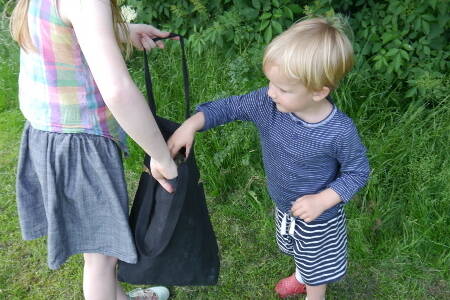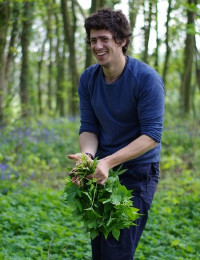
Tips for foraging
Some guidance on how to forage safely, sustainably, and responsibly.
James Wood is a professional, experimental wild food forager based in the UK; he runs wild food foraging and cookery courses.
Along with cooking out in the elements, foraging is a key component of food outdoors. James shares a little of his knowledge with us here.

Foraging is the art of collecting food from the wild. I believe it’s a fantastic opportunity to top up your regular diet with healthy, local foods that are amazingly high in nutrients, minerals and flavour. As well as being able to connect on a deeper level with your local landscapes throughout the seasons.
Practically, foraging involves baring the elements and ground type to go and find your lunch or dinner. On a more relaxed note, foraging can easily be achieved as an addition to a family stroll in the park, weekend in the lakes or as you take the dog out for your daily walk.
Foraging is for everyone – I’ve taken kids out over a period of weeks foraging and now they’re able to confidently teach their parents what’s safe and isn’t safe to eat.
The benefits are massive – not only are you interacting in a positive way with your natural surrounding wild spaces, you’re also able to be physically involved with the changing seasons and end up with extremely fresh, local produce that, in my opinion, is better than organic!
Foraging can take place anywhere (most people are shocked to hear I once ran a foraging course in Canary Wharf, London). Ideally you want to be at least 100 metres from a road and on land that you know will not have been sprayed with pesticides.
On the side of foraging law – you require the land owner’s permission if you wish to dig up any roots of plants.
It’s good practice to talk to the land owner before you forage anything from their land. I like to give some of the produce I collect back to the land owner in the form of jams and chutneys.
Only take what you require and try to keep your picking to no more than 20% of what’s available at the site.

Tips for foraging
Some guidance on how to forage safely, sustainably, and responsibly.

From foraging tips to campfire cooking we've got some tasty recipes to share!
You can also read or download the FREE Health & Wellbeing Focus of The Outdoor Practitioner magazine here.
This issue has a feature article about the importance of snack time.